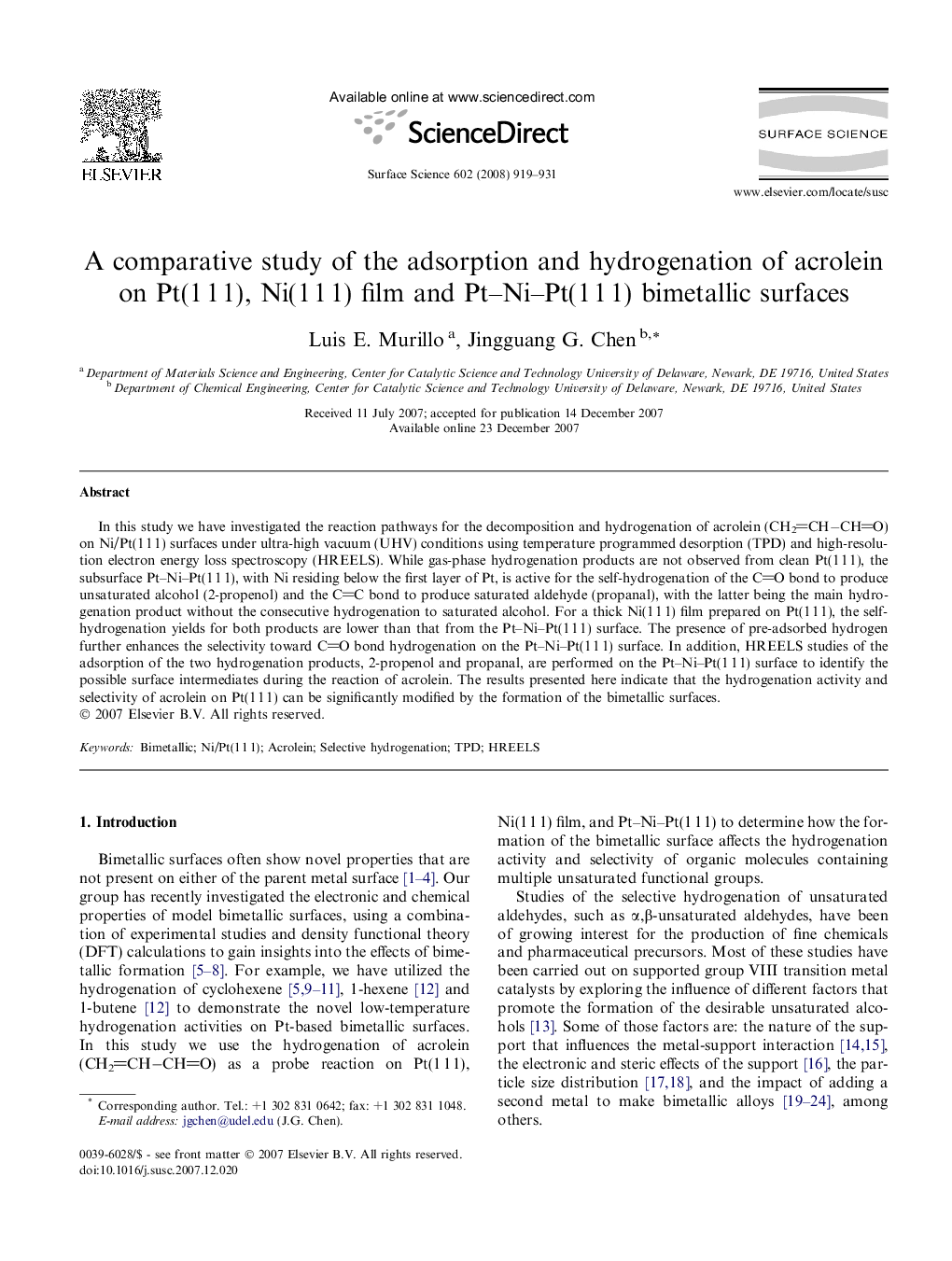| Article ID | Journal | Published Year | Pages | File Type |
|---|---|---|---|---|
| 5425291 | Surface Science | 2008 | 13 Pages |
In this study we have investigated the reaction pathways for the decomposition and hydrogenation of acrolein (CH2CHâCHO) on Ni/Pt(1Â 1Â 1) surfaces under ultra-high vacuum (UHV) conditions using temperature programmed desorption (TPD) and high-resolution electron energy loss spectroscopy (HREELS). While gas-phase hydrogenation products are not observed from clean Pt(1Â 1Â 1), the subsurface Pt-Ni-Pt(1Â 1Â 1), with Ni residing below the first layer of Pt, is active for the self-hydrogenation of the CO bond to produce unsaturated alcohol (2-propenol) and the CC bond to produce saturated aldehyde (propanal), with the latter being the main hydrogenation product without the consecutive hydrogenation to saturated alcohol. For a thick Ni(1Â 1Â 1) film prepared on Pt(1Â 1Â 1), the self-hydrogenation yields for both products are lower than that from the Pt-Ni-Pt(1Â 1Â 1) surface. The presence of pre-adsorbed hydrogen further enhances the selectivity toward CO bond hydrogenation on the Pt-Ni-Pt(1Â 1Â 1) surface. In addition, HREELS studies of the adsorption of the two hydrogenation products, 2-propenol and propanal, are performed on the Pt-Ni-Pt(1Â 1Â 1) surface to identify the possible surface intermediates during the reaction of acrolein. The results presented here indicate that the hydrogenation activity and selectivity of acrolein on Pt(1Â 1Â 1) can be significantly modified by the formation of the bimetallic surfaces.
